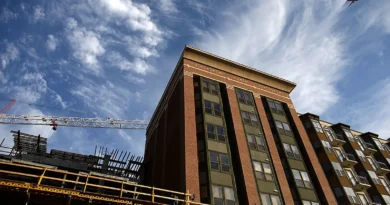Builders Navigate New Opportunities Amid Changing Market
When the late Steven Covey said, “If there’s one thing that’s certain in business, it’s uncertainty,” he could have very well been talking about the U.S. economy and housing market in 2025. This concept was certainly amplified by Federal Reserve Chairman Jerome Powell during his September press conference, when he described the 25 basis point decline in the Federal Funds rate as a “risk management cut” and that “there are no risk-free paths now” amid rising concerns of a softening job market. Still, the Fed’s own updated economic projections for the rest of 2025 and 2026 show positive (but low) GDP growth, unemployment settling at about 4.5% and annual inflation peaking at 3.0% this year before ebbing closer to the mid-2% level a year from now.
Indeed, entering the final quarter of 2025, the U.S. economy will require some deft maneuvering by leaders facing slower growth, inflation a full percentage point higher than what the Fed would prefer and continuing housing affordability challenges. While GDP is expanding, the pace is much slower than in prior years and reflects the challenges of sustaining momentum when faced with high borrowing costs and global trade uncertainties.
The country’s amazingly resilient post-pandemic labor market is continuing to show further signs of cooling that are not necessarily recessionary but concerning. This is due in large part to a collapse in both demand and supply as companies hold onto workers but are reluctant to hire more, as uncertainty reigns. For households, income growth is moderating just as they’re facing higher costs for insurance and property taxes in addition to mortgage payments. Fortunately, the lowest mortgage rates since last October, dropping below 6.4% have already boosted applications for both refinances and purchase loans.
Although inflation has eased substantially from its 2022 peak, it has rebounded in recent months to approach 3%, due largely to sticky costs in services and housing. While tariffs on imported goods have certainly added to higher prices, especially for durable goods and construction materials, Powell has indicated they’re playing a somewhat minor role in the Fed’s overall calculations, but do remain a considerable source of uncertainty.
Given these mixed signals, consumer sentiment remains constrained even as retail sales soared above expectations, most notably among higher-income households. For middle and lower income households, however, spending is shifting from discretionary goods towards essentials. Business sentiment is similarly cautious, with companies scaling back on capital spending and builders pulling fewer permits and starting fewer homes until more inventory has been absorbed.
For the resale housing market, the hoped-for 2025 rebound was postponed primarily due to affordability constraints and the remaining lock-in effect of owners with sub-4% mortgage rates who see no reason to move. Still, according to the NAR inventory is improving, rising nearly 16% year-over-year through July to over 1.5 million units, yielding a supply timeline of 4.6 months and giving hopeful buyers a bit more negotiating room. For now, median prices for existing homes are holding and edged up 0.2% year-over-year to $422,400.
Still, first-time buyers remain squeezed. The median age for entering homeownership rose to nearly 38 years in 2024, the oldest on record. The new-home market is also facing its own challenges, with sales of new single-family homes falling 8.2% year-over-year through July while months of inventory rose 16.5% to 9.2 months versus 4.3 months for existing single-family alternatives. Although builders have done a commendable job of lowering sales prices 4.4% below those of existing homes with most also offering pricey incentives, they continue to face elevated construction costs, labor shortfalls worsened by heightened immigration enforcement and higher tariffs on not just materials but also durable goods such as appliances.
Looking ahead, both the U.S. economy and the housing market in 2025 remain uncertain, but should mortgage rates dip enough that could certainly bring more home buyers off of the sidelines. For both policymakers such as the Fed and households, the ongoing challenge is navigating this cooling phase without tipping into contraction, a balancing act that will likely define the months ahead.
Patrick S. Duffy is a Senior Real Estate Economist for U.S. News & World Report and a Principal with MetroIntelligence. He may be reached at pduffy@metrointel.com
This column is featured in our October issue of Builder and Developer




